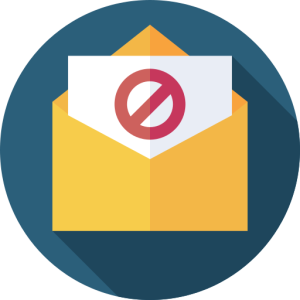ALERT: Threatening Emails are Spiking
![]()
In the last 72 hours, our clients have reported an alarming increase in threatening emails. These emails contain enough personal information to legitimately trigger worry, fear, and in some cases, panic.
This post covers three types of threatening messages and how to respond.
The Attacks
This type of attack is known as a “Exposure Threat” or “Fear of Exposure” attack. Attackers threaten to release embarrassing or sensitive information about you or your business. They may share bits of information or make claims that imply or confirm that they really do have some information.
Here are three common forms of the threat:
1 “We Know Where You Live”
The email arrives in your inbox from what looks like a “legitimate” Gmail, Yahoo!, or other email service. The subject line contains your name or that of a family member. The message includes your full address and a valid phone number. In some cases, this threat may also include a picture of your home or office.
Most often, this type of email does not include any explicit threat or demand.
The implication “we know where you live” is intended to instill fear. The goal is to make you more likely to respond and cooperate with future threats.
2“We Know What You Did”
This form of attack claims to have documents, images, or video of you doing something embarrassing or illegal. The attacker will claim to have access to your email account, or all of your contacts, and will threaten to share the information if you fail to pay a ransom.
This is an explicit form of extortion.
The attackers are betting that the fear of exposure will cause you to pay the demand and prevent you from reporting the attack.
3“We Have Your Information”
This form of attack threatens to disclose sensitive information about you, your business, or your customers. The threat is the damage a data breach causes. This can include serious and costly legal, regulatory, or contractual issues. The attackers may share a sample that “proves” they have the information on hand.
This attack typically includes a specific threat and an extortion demand.
The preview information shared by the attackers may be from sensitive files, but it may also be available from other sources. This form of attack warrants some investigation.
How to Respond: Do NOT Panic!
First and foremost, do NOT panic. The success of these attacks is dependent upon your fear and your reaction. If you receive an email that is like one of these cases or similar, how you respond can make a difference.
No Specific Threat
- If the email does not contain a specific threat or demand, your best response is to mark and report the email as spam. Doing so should direct future emails directly to your spam or junk folder.
- You can take the extra step of reporting the message as abuse to the email server. Here are links to report email abuse for Gmail, Sky/Yahoo!, and Xfinity/Comcast.
With a Specific Threat
- If the email contains a specific threat, you can and should report the message as spam/junk. We recommend your report this to your IT service provider. Your IT team should investigate the possible risks and take appropriate preventative and responsive measures.
- Extortion is a crime. While many local law enforcement departments do not have the expertise to investigate cyber crimes, most state police organizations have cyber crime units. You can also report the attack directly to the Internet Crime Complaint Center (IC3). The IC3 will route your report to the FBI and other relevant agencies. Depending on the nature of the attack, the response may range from acknowledgement of the report to a full criminal investigation.
- If the email includes a threat to show up at your home or business if you do not respond or comply. we strongly recommend reporting the threat to law enforcement.
Possible Data Breach
- If the threat indicates that the attacker has, or can, access sensitive data, promptly take additional steps to protect yourself and your business.
- If the attack references personal information, placing locks on your credit reports is always a good step. If the threat mentions (or indicates) a source, such as your bank or investment accounts, report the incident directly to that institution or business. Discuss protections they can put in place on your behalf.
- If the attack references information from your business, promptly investigate the possible breach. This may involve scanning systems for malware and advanced threats, analyzing logs for unauthorized access, and verifying compliance with security measures. The level of your investigation should match the level of risk. Your IT service provider can help you assess the situation and determine the best course of action.
Your Next Steps
You can protect yourself and your business from these attacks, and other cyber attacks before they happen. Our Security CPR model provides a guide.
- Communicate and Educate: Learn about, and help your team understand, the risks, nature, and impact of cyber attacks. Communicate the need for vigilance and how their behaviors can enable or prevent a successful attack.
- Protect and Prevent: Put cybersecurity policies, procedures, systems, and services in place commensurate with your business’s risks, needs, priorities, and budget. This includes advanced threat protection for email and strong settings for your SPF, DKIM, and DMARC protocols in your DNS record.
- Respond and Recover: Ensure that you have systems, processes, and services in place to respond and recover should an attack be successful. Beyond restoring data and systems, have resources available to address the legal, regulatory, and customer service issues that often arise. Ideally, have solutions in place that allow you to keep your business running while you respond and recover.
For help assessing your current cybersecurity protections, please send an email or schedule time with one of our Cloud Advisors to discuss our cybersecurity assessments and solutions.
About the Author
 Christopher Caldwell is the COO and a co-founder of Cumulus Global. Chris is a successful Information Services executive with 40 years experience in information services operations, application development, management, and leadership. His expertise includes corporate information technology and service management; program and project management; strategic and project-specific business requirements analysis; system requirements analysis and specification; system, application, and database design; software engineering and development, data center management, network and systems administration, network and system security, and end-user technical support.
Christopher Caldwell is the COO and a co-founder of Cumulus Global. Chris is a successful Information Services executive with 40 years experience in information services operations, application development, management, and leadership. His expertise includes corporate information technology and service management; program and project management; strategic and project-specific business requirements analysis; system requirements analysis and specification; system, application, and database design; software engineering and development, data center management, network and systems administration, network and system security, and end-user technical support.


 Allen Falcon is the co-founder and CEO of Cumulus Global. Allen co-founded Cumulus Global in 2006 to offer small businesses enterprise-grade email security and compliance using emerging cloud solutions. He has led the company’s growth into a managed cloud service provider with over 1,000 customers throughout North America. Starting his first business at age 12, Allen is a serial entrepreneur. He has launched strategic IT consulting, software, and service companies. An advocate for small and midsize businesses, Allen served on the board of the former Smaller Business Association of New England, local economic development committees, and industry advisory boards.
Allen Falcon is the co-founder and CEO of Cumulus Global. Allen co-founded Cumulus Global in 2006 to offer small businesses enterprise-grade email security and compliance using emerging cloud solutions. He has led the company’s growth into a managed cloud service provider with over 1,000 customers throughout North America. Starting his first business at age 12, Allen is a serial entrepreneur. He has launched strategic IT consulting, software, and service companies. An advocate for small and midsize businesses, Allen served on the board of the former Smaller Business Association of New England, local economic development committees, and industry advisory boards.
